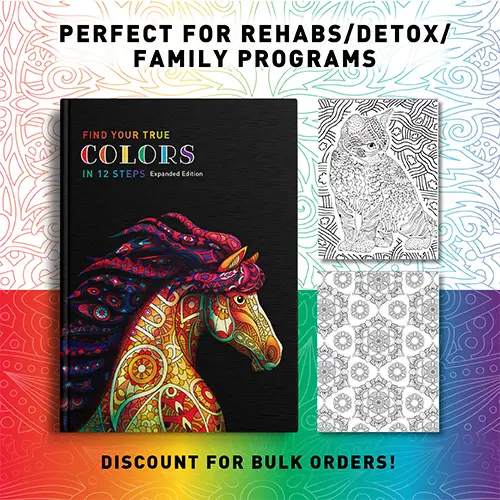Anxiety Relief Strategies Are Mandatory For Life Right Now
Let’s be real—some days, anxiety shows up like an uninvited guest who’s way too comfortable in your space. It whispers worst-case scenarios, tightens your chest, and messes with your peace of mind before your first cup of coffee. The good news? You don’t have to let it move in. Whether you’re navigating everyday stress or those occasional full-blown mental hurricanes, there are grounded, practical strategies that can help you feel more in control—one mindful moment at a time. In this guide, we’ll walk through simple, doable habits that can bring calm back into your daily routine—no incense or mountaintop required.
Anxiety relief is something many of us long for. How do we stop the worry and fears that plague us? Did you know that millions of adults and children everywhere suffer from anxiety disorders? These disorders influence relationships, jobs, education, and general well-being. One such illness is Generalized Anxiety Disorder (GAD). This is over-worrying about potential threats, making poor decisions out of fear, being paralyzed and afraid to take action when needed. Anxiety can take many forms and have many negative consequences.
Although effective treatments are available for this condition, many people opt not to seek help. This can worsen the problem and hinder your happiness and personal development. Getting help can lead to recovery. You need tricks to get your thoughts and fears under control Understanding the anxious mind will help you use effective techniques to relieve anxiety and become more confident.
Try These Approaches For Anxiety Relief
As we’ve noted, anxiety disorders can have a crippling effect on one’s ability to learn, work, and maintain family ties. Attention training, exposure treatment, and other anxiety-reduction strategies can all help you to recover. Here are your steps to recovery.
Anxiety Relief 1. Learn And Accept Anxiety As An Issue
It’s okay to acknowledge anxiety as a legitimate problem. The detrimental effects of anxiety can’t be cured by denying or dismissing it. Therefore, the first step toward finding healthy strategies to deal with anxious thoughts and sensations is acceptance.
To recover from anxiety disorders, it is important to understand how the body’s ‘flight-or-fight’ response works. This response can be triggered inappropriately by situations that are usually harmless for people with anxiety disorders. By comprehending this physiological response, you can recover from anxiety disorders. Therefore, the first key strategy for encouraging symptom control is education.
Anxiety Relief 2. Identify Your Triggers
What triggers you? Anxiety can result in physical symptoms such as chest pain, concern, anxiety, and panic attacks. However, anxiety symptoms can be brought on by or made worse by triggers, events, feelings, or experiences. Common triggers include the following:
● Stress related to jobs, relationships, and other aspects of life.
● Drug or medication withdrawal.
● Pharmaceutical side effects.
● Recurrence of past trauma.
● Chronic pain.
● Tobacco use.
Therefore, one of the most crucial aspects of managing and overcoming anxiety attacks is recognizing what triggers your anxious responses.
Anxiety Relief 3. Professional Therapy
By using professional cognitive behavioral therapy (CBT), you can understand how your thoughts influence anxiety symptoms. Changing thought patterns can reduce the frequency and severity of anxiety episodes. CBT emphasizes the ways attitudes, ideas, and beliefs impact emotions and behavior, imparting coping mechanisms for resolving various issues. Therefore, cognitive Behavioral Therapy (CBT) is one primary psychological intervention for health anxiety.
It is a skills-based approach. It assists individuals in changing the way they think and behave in response to health worries. Moreover, physiotherapy relieves tense muscles and enhances mood, self-esteem, sleep, and mood.
Anxiety Relief 4. Practice Deep Breathing And Mindfulness
Shallow breathing can limit the movement of the diaphragm. Consequently, the amount of oxygen reaching the lungs’ lower part is affected. This can make you feel anxious and short of breath. However, deep breathing promotes full oxygen exchange. This means more oxygen enters the body while carbon dioxide exits. For instance, abdominal breathing can help you feel more relaxed and less anxious. This is a type of deep breathing that you must try to manage anxiety.
Moreover, you can experience less stress, fewer disputes, and healthier relationships by practicing mindfulness. Mindfulness practices increase awareness of thoughts, actions, and body, which can lower anxiety and anger. Therefore, incorporating mindfulness practices into their daily routines can have a significant positive impact. It can improve your overall well-being and enhance interactions with others.
Anxiety Relief 5. Exercise And Maintain Fitness
Typical symptoms of anxiety include fatigue, irritability, restlessness, and insomnia. You can opt for medication and meditation to deal with these problems separately. However, regular exercise can serve as an effective strategy for treating these GAD symptoms. Endorphins, released during exercise, can lessen agitation and restlessness.
Additionally, it enhances sleep patterns, promoting greater general rest and reduced insomnia. A recent review of research in 2018 found that higher-intensity exercise routines are more effective than lower-intensity routines. Therefore, when paired with prescription drugs, regular exercise is a good substitute for medication.
Self Care For Lasting Recovery
Anxiety is a widespread problem. However, you can control it with both natural therapies and expert assistance. A large percentage of people suffer from Generalized Anxiety Disorder, which results in excessive worry and fear. Moreover, personal development is hampered by the intricacies of the anxious mind. Therefore, regaining control over one’s life and overcoming anxiety is necessary!
More Articles About Anxiety Relief
4 Ways To Cope With Someone Else’s Anxiety
How To Support Your Husband Through Depression and Anxiety
Mindfulness Exercising Is The New Cure For Anxiety
Can You Be Addicted To Weed, Marijuana, CBD
22 Tips For Sober Life This Summer
What’s Your Relapse Prevention Plan





















